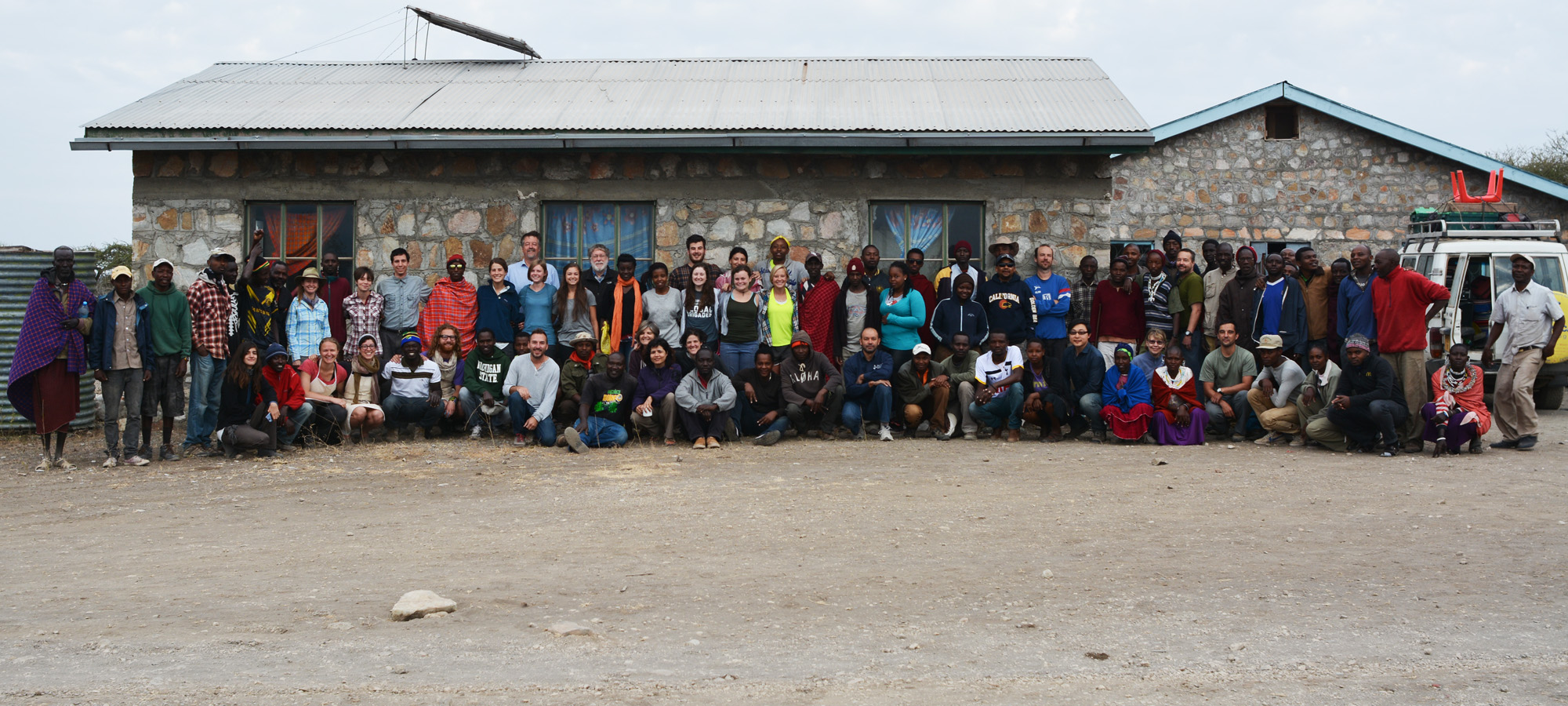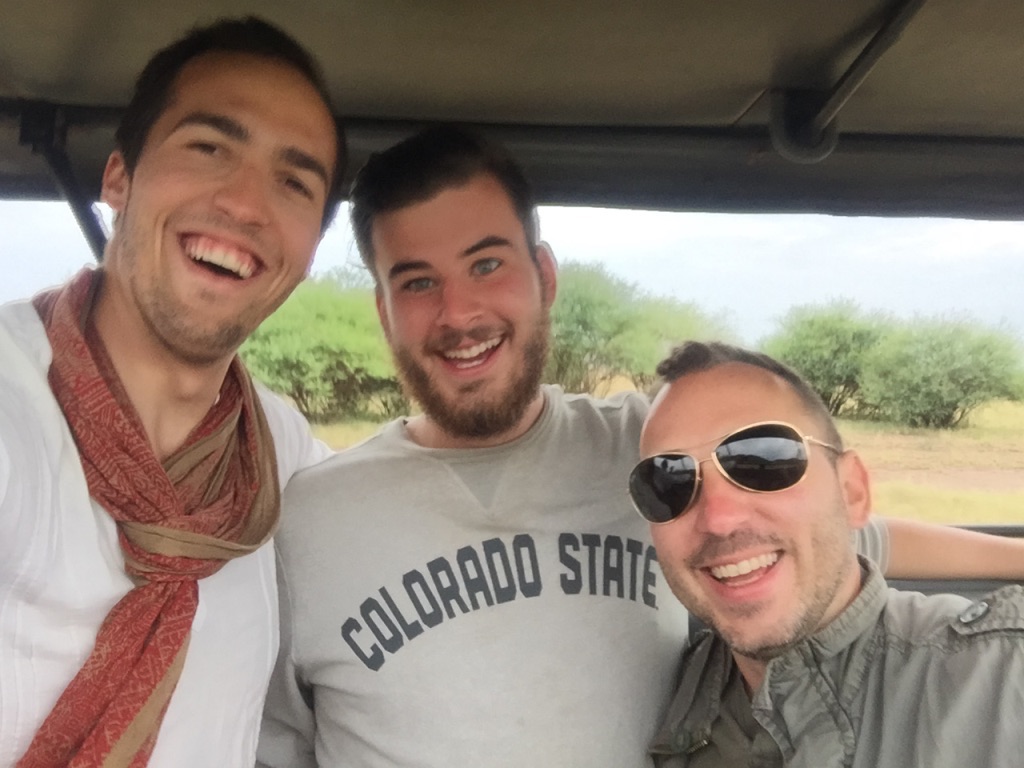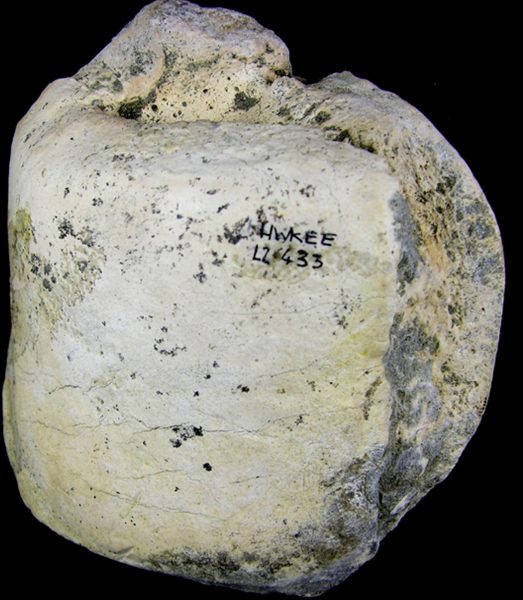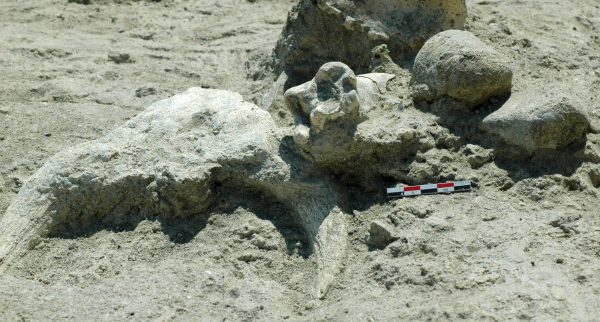Shortly after falling asleep after a long, hard day in the African sun, campers wake abruptly by the high-pitched giggles of hyenas just a short distance away. “An unlucky donkey met its demise about a kilometer away leading to a small gathering of scavengers that night,” said Trevor Keevil, Colorado State University anthropology graduate student. “We were kept awake listening to the sounds of hyenas laughing and jackals yelping, hoping that the bush-and-tree fence around our camp was capable of keeping the animals out.”
For a few months out of the year, this camp in Olduvai Gorge in northern Tanzania is home to assistant professor of anthropology Michael Pante, his students, and other Olduvai Geochronology and Archaeology Project (OGAP) researchers.
Located in the Ngorongoro Conservation Area, Olduvai Gorge is an important area for human prehistory. The gorge forks into two deep, narrow valleys and has a combined length of about 30 miles. The valley walls expose archaeological sites that suggest nearly continuous human occupation of the area for the last 2 million years.
Around 1.7 million years ago, Olduvai had a wide, calm lake that would have been a water resource for our human ancestors as well as other animals on the landscape. At this time, the early human species Homo habilis begins to disappear from the fossil record while Homo erectus, the first human species to possess modern human-like body proportions, starts to emerge. During this transition in the fossil record, changes in tool technologies from early, primitive Oldowan (early human) stone tools to more advanced Acheulean handaxes (used by Homo erectus) are seen in the archaeological record.
Stone tools found at Olduvai in the 1930s by paleoanthropologist Louis Leakey inspired several decades of fieldwork. In 1959, Mary Leakey, Louis’ wife, discovered a skull belonging to one of our human ancestors, Paranthropus boisei, and during the 1960s and 70s found many fossils belonging to other early human species such as Homo habilis and Homo erectus.
Olduvai Geochronology and Archaeology Project

The OGAP team, made up of researchers from Univ of Wisconsin-Milwaukee, Indiana University – Bloomington, University College London, and Colorado State University, is interested in learning about the ecology and feeding behaviors of early humans at a time with significant changes in climate, fauna, and stone tool technologies.
There are several distinct stratigraphic layers (beds) in the gorge, each associated with a different period of time. Pante and the OGAP team focused on Bed II with a date range of approximately 1.79 to 1.15 million years. OGAP’s main goals have been to refine the dates from Bed II and to excavate stone tools and fossils from this stratigraphic area. The decade-long project, started in 2008, and initially funded by the National Science Foundation, began as a small survey searching for eroding fossils and stone tools. The OGAP crew soon realized that they needed to excavate at specific locations because of the volume of stone tools and fossils found there.
Building on Mary Leakey’s excavation in 1972 of archaeological site HWK EE, the OGAP team decided to curate the material and re-excavate the area. Meave Leakey, Louis and Mary’s daughter-in-law, gave Pante access to catalogs that Mary left behind, which informed the re-excavation of Leakey’s original dig. OGAP also excavated adjacent to Leakey’s original excavation and then across the same stratigraphic layer, finding additional fossils and stone tools.
Working with students and the local Maasai
Through the Olduvai Gorge Archaeology Field School program that Pante co-directed with de la Torre from University College London, students were plugged into OGAP research with training and courses, as well as field and lab work. Students learned how to excavate, label and clean fossils, catalog, and conduct analyses. The OGAP team also developed a new system of labeling. Instead of handwriting on the material, they used barcodes to reduce damage to the bone and to increase curation efficiency.
Six outstanding students from the U.S., Canada, and Tanzania decided to come to CSU for graduate school after their involvement with the Olduvai Field School. Pante also brought some of his other graduate students from the U.S. and Turkey to Olduvai so that they could collect data for their theses and other research related to the goals of the team. Alumna Merve Gumrukcu, for example, collected samples for isotope analysis from fossilized animal teeth to investigate paleoecological conditions of the area.
In addition, local Maasai men and women were hired to help with excavations and lab work. “The local Maasai population is supportive of the project and they are an integral part of our conservation efforts at Olduvai Gorge,” explained Pante. “Tanzanians recognize the importance of protecting Olduvai and are genuinely excited to contribute to a project that preserves the UNESCO World Heritage Site.”
After the excavation at the HWK EE site was completed, the OGAP team and Maasai celebrated with “local Tanzanian music, the traditional Maasai jumping dance, and singing,” recalled Keevil.
Eating behaviors of early humans
The OGAP team published so that they could detail their findings in one, cohesive story and give a blueprint that people can follow for a similar excavation.
“Together with Mary Leakey’s collections, we recovered one of the largest assemblages of Oldowan stone tools from anywhere in the world at the HWK EE site,” said Pante. “Our ancestors were mostly scavenging the animal resource foods they acquired at the site 1.7 million years ago. They varied the carnivorous portions of their diets in response to seasonal or climatic changes that affected the nutritional value of prey. This is also the earliest evidence of persistent butchery of megafauna such as elephants, giraffe, and hippos from anywhere in the world, indicating that early humans were opportunistic in their acquisition of carcass foods.”
In addition, the researchers discovered a new species Parmularius maasaicus, an extinct Genus closely related to the African antelope. The researchers named the species in honor of the Maasai people who live in the Olduvai Gorge area.
The students working with Pante were able to experience the entire research process, and publish on it. Keevil and Department of Anthropology Alumnus Matthew Muttart excavated at Olduvai Gorge, analyzed faunal remains, and wrote, revised, and published in a peer-reviewed journal. “I learned the importance of brevity and making my work accessible to the masses and not just the few participants in my sub-field. I have also learned, thanks to working in a lab with multiple concurrent projects under one larger major project, how to see an archaeological site and the artifacts it bears in the larger regional scope, and how small changes and finds can shape the larger story,” says Muttart. In 2017, Keevil and Muttart were authors on an article about a new quantitative methodology for identifying cut marks on fossilized animal bones in the Journal of Human Evolution.

The OGAP team’s publications are mostly on two sites in Olduvai, but OGAP has excavated other sites and the material still needs to be analyzed and published. “We have identified other areas that have excavation potential,” Pante adds. “I have also been a working with the Olduvai Coring Project where we try to understand Olduvai Basin from a paleoenvironmental perspective.”



